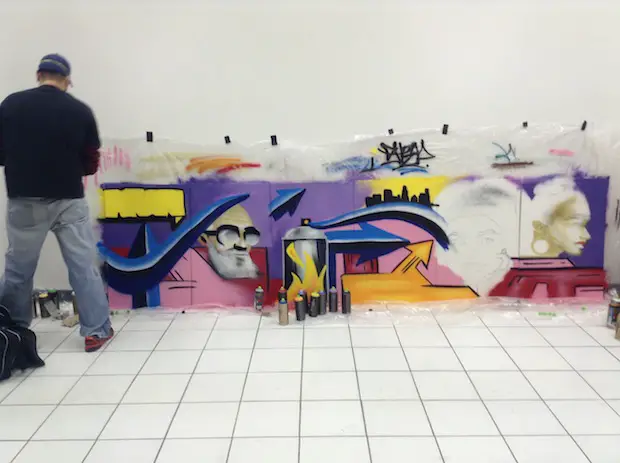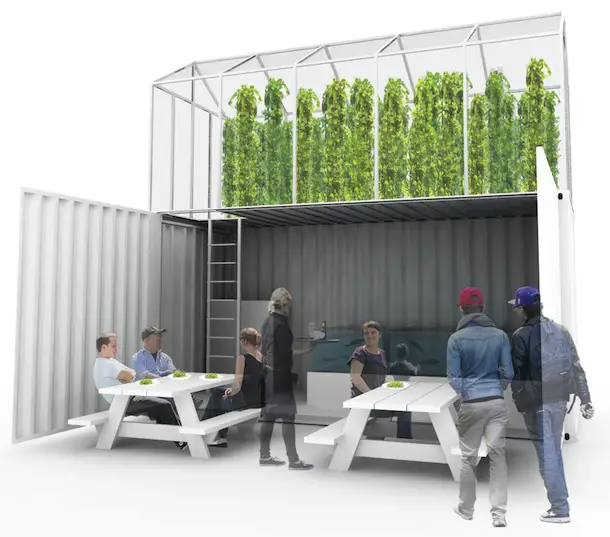Twitter Mashup: Global #cityheritage Chat on Reusing Urban Spaces and Places
The #builtheritage chat, which focuses on heritage and preservation issues, is celebrating its two-year anniversary in March. The chat started with an idea, some Twitter conversation, and finally emails — and a plan — between the National Trust for Historic Preservation in the USA, and myself, a heritage consultant in Ontario, Canada.
The spirit of the chat has always been communication and collaboration. We’ve had several chats focused on partners’ programs, such as one with Habitat for Humanity on their rehabilitation projects. So to celebrate our second anniversary, we’re partnering with our Twitter chat neighbor – This Big City and Future Cape Town‘s #citytalk, which focuses on broad urban issues and sustainability. Since this is a special chat, both because of our anniversary and our amazing partner, we’ve decided to revisit our very first topic: adaptive reuse.
The first thing this collaboration has taught me is that “adaptive reuse” is not a common term. I always assumed that it crossed many disciplines, but perhaps it is more preservation-focused than I realized. So instead of referring to it as adaptive reuse, we’ll be using a more inclusive term: building reuse. (We once focused an entire #builtheritage chat on the issue of language, so we’re happy to learn about how others view heritage terminology.)
Many buildings, landscapes, and structures in cities are built for specific purposes — schools, industrial buildings, commercial buildings, even homes — and over time can cease to be used for that purpose. Yet these structures might become valuable to the community in some other way over the course of their lives. They can be important landmarks, or examples of beautiful architecture, or of great historical importance, and many also contribute to the streetscape.
As such, instead of being demolished or built over once their original use ceases, they can be adapted to a new use. Schools are subdivided into condos; industrial complexes become entertainment districts with theaters, galleries, and restaurants; homes are converted to stores. So you can see how reuse of existing buildings is a primary concern to many people interested in heritage.
Our first chat on building reuse brought up some great sources of discussion. Chatters provided some innovative examples of building reuse, including a cheese factory turned into a climbing gym, numerous industrial complexes turned cultural centers, and churches being used as residences. It was even pointed out that landscapes can be reused, citing the example of a hazelnut farm-turned-public park in Oregon.
Our questions also touched on barriers to reuse and ways to overcome them. Money, building codes, and non-supportive local laws were cited as the main barriers. We discussed creative solutions as well, such as proving local officials tours of successful reuses and getting ahead of development by soliciting ideas for reuse from the public.
I’m hoping that this next Twitter chat mashup will revisit these questions to solicit ideas from around the world on successful examples and creative approaches. But I’m also interested in hearing the broader perspective — for example, how these reuses fit into the urban context, how they support other urban initiatives, and how they support cities’ sustainability goals.
If all this piques your interest, join us on March 6 at 6PM GMT/7PM CET/1PM EST for the chat. Join me (@jonaskayla) and Sarah Heffern (@PresNationLive) from #builtheritage, and #citytalk’s Joe Peach (@thisbigcity) and Rashiq Fataar (@futurecapetown) for an amazing, international chatting experience.
The chat is always open to new participants. Here’s how to get involved:
1. Sign in to Twitter, TweetDeck, or TweetChat. We (the chat moderators) usually use TweetChat since it adds the hashtag automatically and allows for easy replies and re-tweets.
2. Follow and tweet with the hashtag #cityheritage. (Note the adapted hashtag for this special chat.)
3. Watch for the questions in the Q1 format. Provide answers using the A1 format, and interact with other participants using replies and retweets.
What we mean by the Q1/A1 format is this: Questions (we’ll have six for this chat) are posed by the moderators as Q1, Q2, Q3, etc. We ask that chatters reply with A1, A2, etc. to help everyone stay clear on what they’re responding to. A lot of side conversations (often about food) still break out, but it helps keep things at least a little organized.
We look forward to chatting with you!
Kayla Jonas Galvin is a heritage planner and blogger at Adventures in Heritage.
Photo: JoeinSouthernCA


